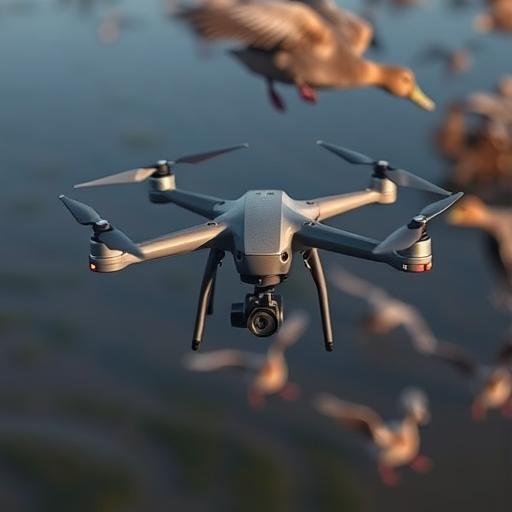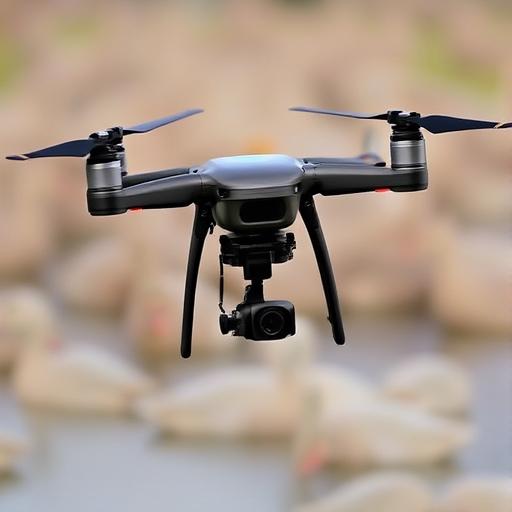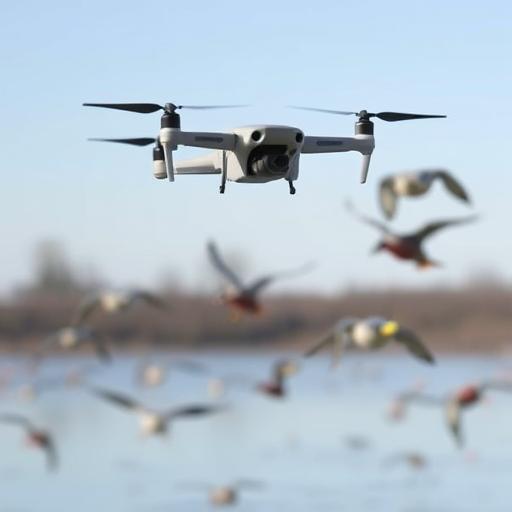The use of drones among hunters and outdoor enthusiasts has been on the rise, driven by the technology’s potential to enhance various aspects of their activities. One area where drones have shown promise is in scouting ducks. This article explores the feasibility and best practices of using drones for duck scouting, highlighting the benefits, legal and ethical considerations, and practical tips for those looking to adopt this technology.
Benefits of Using Drones for Duck Scouting
Drones offer several advantages when it comes to scouting ducks. These benefits can be broadly categorized into enhanced visibility and surveillance, increased safety and reduced disturbance, and precision and data collection.
Enhanced Visibility and Surveillance
Drones equipped with high-resolution cameras can provide a bird’s-eye view, helping hunters locate duck habitats, identify patterns, and scout large areas efficiently. This capability is particularly useful in areas with dense vegetation or difficult terrain.
Increased Safety and Reduced Disturbance
Using drones for scouting can minimize the need for physical presence in the scouting area, thereby reducing disturbance to the ducks and their habitats. This approach also enhances the safety of the scouting process by avoiding hazardous terrain or conditions.

Precision and Data Collection
Drones can capture detailed images and videos, which can be used to analyze and understand duck behavior, habitat conditions, and population density. This data can be invaluable in planning hunting strategies and ensuring that hunting practices are sustainable.
Legal and Ethical Considerations
While drones can be a powerful tool for duck scouting, their use is subject to various legal and ethical considerations.
Drone Regulations and Laws
In the United States, the Federal Aviation Administration (FAA) regulates the use of drones. Hunters using drones for scouting must comply with FAA regulations, which include registering drones, adhering to flight restrictions, and avoiding interference with manned aircraft. Similar regulations exist in other countries, and it is essential to familiarize oneself with the local laws.
Ethical Hunting Practices
The use of drones for duck scouting must be done in a way that respects wildlife and their habitats. Hunters should avoid using drones to harass or disturb ducks and ensure that their use does not provide an unfair advantage. Ethical considerations also include not using drones to locate or track wounded game.
Best Practices for Drone-Based Duck Scouting
To get the most out of drone-based duck scouting, several best practices should be followed.
Choosing the Right Drone and Equipment
When selecting a drone for scouting, consider factors such as camera quality, flight time, and range. A drone with a high-quality camera and adequate flight time is essential for effective scouting.
- Camera resolution: At least 4K resolution for clear images and videos
- Flight time: Adequate to cover the scouting area without needing to recharge
- Range: Sufficient to scout the desired area without losing signal
Scouting Techniques and Strategies
Effective scouting involves flying at appropriate altitudes, using the right camera settings, and timing flights according to duck activity patterns. For example, flying at a lower altitude can provide more detailed images, while a higher altitude can offer a broader view of the area.

Post-Scouting Analysis
The data collected during scouting should be thoroughly analyzed to gain insights into duck behavior, habitat conditions, and population density. This analysis can involve reviewing footage, mapping habitats, and planning hunting strategies based on the information gathered.
Case Studies and Examples
Several hunters and outdoor enthusiasts have successfully used drones for duck scouting. These case studies highlight the effectiveness of drones in locating duck habitats, understanding duck behavior, and improving hunting outcomes.
For instance, a hunter in the Mississippi Delta region used a drone to scout a large wetland area, identifying key duck habitats and patterns. This information allowed the hunter to plan a successful hunt, resulting in a higher success rate.
FAQs
Is it legal to use a drone to scout ducks?

The legality of using drones for scouting ducks varies by country and region. In the U.S., the FAA regulates drone use, and hunters must comply with these regulations. It is essential to check local laws and regulations before using a drone for scouting.
What are the best drones for duck scouting?
The best drones for duck scouting are those with high-quality cameras, adequate flight time, and sufficient range. Models with features such as 4K resolution, GPS, and obstacle avoidance are particularly well-suited for scouting.
Can drones actually help improve hunting success?
Yes, drones can improve hunting success by providing valuable insights into duck behavior, habitat conditions, and population density. By using drones to scout effectively, hunters can make more informed decisions and increase their chances of success.

How can I minimize the disturbance to ducks when scouting with a drone?

To minimize disturbance, fly the drone at a safe distance and altitude, avoid flying directly over ducks, and use a drone with a quiet motor. Additionally, consider flying during times when ducks are less active to reduce the impact of scouting.
Conclusion
The use of drones for duck scouting offers several benefits, including enhanced visibility and surveillance, increased safety, and precision data collection. However, it is crucial to comply with legal regulations and adhere to ethical hunting practices. By following best practices for drone-based scouting and being mindful of the potential impact on ducks and their habitats, hunters can effectively use drones to improve their hunting outcomes while promoting sustainable and responsible hunting practices.
